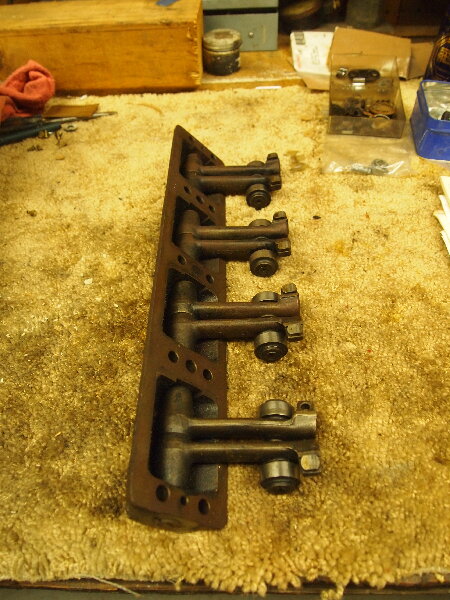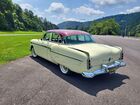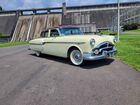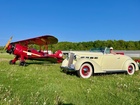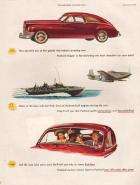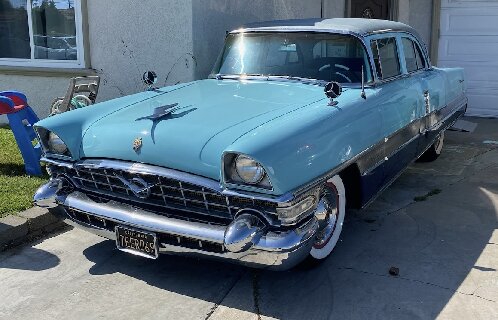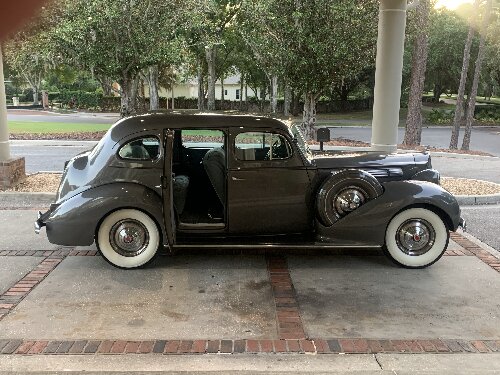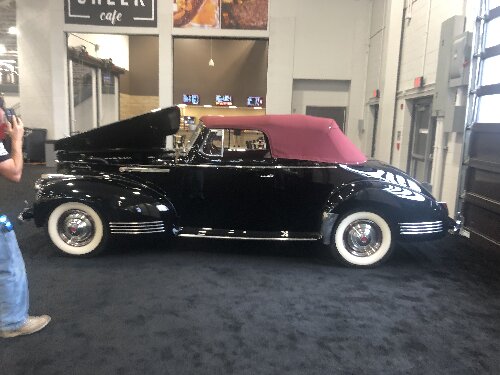|
Re: WSJ article About a Packard
|
||||
|---|---|---|---|---|
|
Just popping in
|
Quote:
I remember when someone used to park their Packard outside their business with the top down and you could walk around the car and look inside. The cars enormous. Loved it!
Posted on: 5/24 14:32
|
|||
|
||||
|
Re: Ammeter
|
||||
|---|---|---|---|---|
|
Home away from home

|
Ok! I assumed it was positive ground cause of the age…I’ll go check it again now tks
Posted on: 5/24 13:54
|
|||
|
||||
|
Re: 1924 Sport 136
|
||||
|---|---|---|---|---|
|
Home away from home
|
I don't know of a source for any factory specifications for allowable run-out. The dimpling at the rivet points suggests a manufacturing flaw, or possibly a repair done in the past. However, the uniformity of the run-out among the 4 wheels supports a manufacturing defect and that the wheels were deemed to be within acceptable limits.
Posted on: 5/24 12:53
|
|||
|
||||
|
Re: 1930 Rocker Panel Cover - Gasket Change Challenges
|
||||
|---|---|---|---|---|
|
Just popping in

|
Thank you all for your replies. Apparently I had no idea what I was getting into. This is not a simple gasket change. Another Packard owner sent me a picture from his '32 showing the valve lifter arms that are connected to the panel. I'm going to try to pry the cover a tiny bit and squeeze some RTV sealant in there for now, and live with the leak until I need valve work. I'm in over my head here!
Posted on: 5/24 12:43
|
|||
|
1930 7-45 Dual Cowl Sport Phaeton
|
||||
|
||||
|
Re: Door Seals
|
||||
|---|---|---|---|---|
|
Home away from home

|
Quote:
I came to the conclusion that my handle clips are not correct for the car. The two doors have different clips in them, and neither is flush even though they are in all the way (confirmed by visual inspection and additional hammering for good measure). They can't be pushed forward anymore. So I cut off the parts that were interfering with the weatherstrip and put the weatherstrip on. If I ever need to remove the door handles I would've needed to remove the door panels and drop the glass anyways. So nothing changed for me there.
Posted on: 5/24 12:18
|
|||
|
||||
|
Re: 1930 Rocker Panel Cover - Gasket Change Challenges
|
||||
|---|---|---|---|---|
|
Forum Ambassador

|
On my 1934 Eight (same valve lever and roller arrangement) I was able to remove the cam follower covers/levers/rollers with lots of frustrating effort without lifting any of the valves off their seats. But to reinstall them I had to lift and block open those valves that were open when the units were removed, i.e. those where the cam lobe was off it's base line. If you have a choice, this is a job best set aside until such time as a valve servicing is needed.
Posted on: 5/24 12:10
|
|||
|
||||
|
Re: Stewart's 1955 Packard 400
|
||||
|---|---|---|---|---|
|
Home away from home
|
Quote:
If SMS sales carpet they forgot to add it to their website. Their products page shows "Carpet Sets" but there is no link, like the other pages have. I guess I will give them call soon and confirm. As I’ve said many times before, sites are virtually never up to date unless they are programmed directly to their inventory control and most parts houses don’t have inventory control and certainly don’t update their sites after they are created! Call or email them.
Posted on: 5/24 11:43
|
|||
|
||||
|
Re: Ammeter
|
||||
|---|---|---|---|---|
|
Home away from home
|
Okay, first of all this document is written for a negative ground car and you have positive ground, so to use it you have to change some things. Like it says touch the + lead to arm and – to ground. You should do the opposite, etc.
To confirm, we can check: - when the – of your voltmeter is on the arm terminal, and + on ground, with the car on, you should see some positive voltage. If it's negative, your generator is polarized backwards. (If you have an analog or cheap voltmeter that cannot indicate negative voltage, switch the leads to check for negative voltage.) You should disconnect arm and field from the regulator during these tests. Edit: saw your edit.
Posted on: 5/24 11:30
|
|||
|
'55 400. Needs aesthetic parts put back on, and electrical system sorted.
'55 Clipper Deluxe. Engine is stuck-ish. |
||||
|
||||
|
Re: 1924 Sport 136
|
||||
|---|---|---|---|---|
|
Home away from home

|
In order to concretize my results of the synchronization measurement,...
First of all... yes, all relevant components for holding the rims on the balancing machine are perfect. The adapters I made that had to be made to mount these rims on the balancing machine have a vertical runout of 1/100 mm and a side runout of 1.2/100 mm. Also negligibly low. The adapters are manufactured in such a way that the rim is forcibly centered. The stop area of the rims, which lies against the brake drums, was metallically clean during the measurement. I measured the runout at the relevant point right next to the bead area of the rim, where the tire first rests on the rim and also at the end of the tire pad, 1 cm before the start of the snap ring connection. I measured the side runout in the area of the tire bead, where the curve ends at the rising rim flange... also approx. 6-8 mm above the tire contact patch. Basically, it should be noted that the entire tire contact area around the rim was so irregular, even in the area of the greatest runout, that a measurement with the micrometer screw was not possible. And this despite the fact that I sanded the entire surrounding surface cleanly with the eccentric sander (180 grit) and filled the remaining shallows with spray filler and then sanded them flat again, so that only (!) the depressions and holes were filled and the rest of the metal surface closed see is. The rim was visible (..as shown in the pictures...) However, it was clearly visible that the rim ring was pulled deeper where the rivets were set. It can be seen very clearly on page 8, ... picture ... 439. For me, the external indication was that the inner diameter of the rim ring did not perfectly match the outer diameter of the inner rim disc. This was clearly visible as an undulating movement on the surface as the tire was rotated under the dipstick. The observed impact was not only visible in one location, but in various locations around the entire contact patch of the tire. The 3 mm mentioned was just the largest height difference measured. The same applies to the determined lateral runout. To me this suggested that this may have been a question of production output/capacity at the time. That's why I'd be interested to know if anyone knows that the heights and lateral runout for the same rims or rims with the same design agree with my results. As far as side runout is concerned... I would have liked to have tried to have the rims optimized as much as possible by a specialist company. Unfortunately, the last company in my area that could repair steel disc rims closed 25 years ago. Everything only works on aluminum rims. So... if it turns out that the condition of the rims is due to production, I would forget the whole thing and drive the wheels as they are. Karl
Posted on: 5/24 11:23
|
|||
|
||||

 Cam followers.jpg (2,605.41 KB)
Cam followers.jpg (2,605.41 KB)